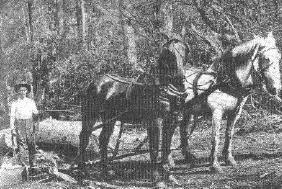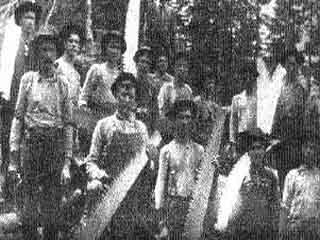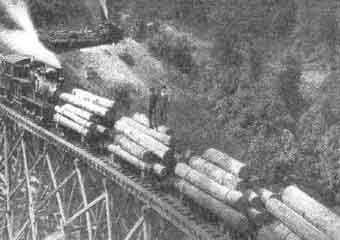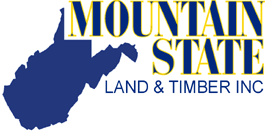TIMBER HARVESTING

Real horsepower moved the logs in the early days.

Not so long ago logging railroads, horse teams and crews with crosscut saws were common.

Many West Virginians can warmly recall hearing the train's whistle as powerful locomotives rambled out of the mountains.

Today our company contracts with professional timber production companies to harvest the trees we purchase.
THINK ABOUT WHAT YOUR FOREST PROVIDES
The first step is very simple. Just think about all the wonderful values your forest provides and how you want to manage for them. These include timber income, wildlife habitat, clean air, pure water and also recreational opportunities. As registered professional foresters, we can help you make sound decisions concerning your forest.
........KEEPING GOOD NEIGHBORS.......
Once you decide how you want to manage your property, we then identify and mark the property lines. We try to meet with your neighbors and let them know the lines have been marked and answer any questions they may have regarding our plans (starting and finishing the sale, traffic, noise, environmental concerns and so on).
CRUISING THE TIMBER
After the property lines are marked, registered professional foresters begin "cruising" the timber. This step identifies the trees to be harvested. One forester measures the diameter of the tree at breast height (dbh) as the other forester determines the grade and number of logs in the tree. The tree is then recorded in a handheld computer by species, grade and size. This tree was marked with blue paint to let the timber cutter know it is to be harvested. The foresters also mark trees which may need special attention that will not be harvested, such as wildlife den trees or trees in sensitive areas near streams or wetlands.
